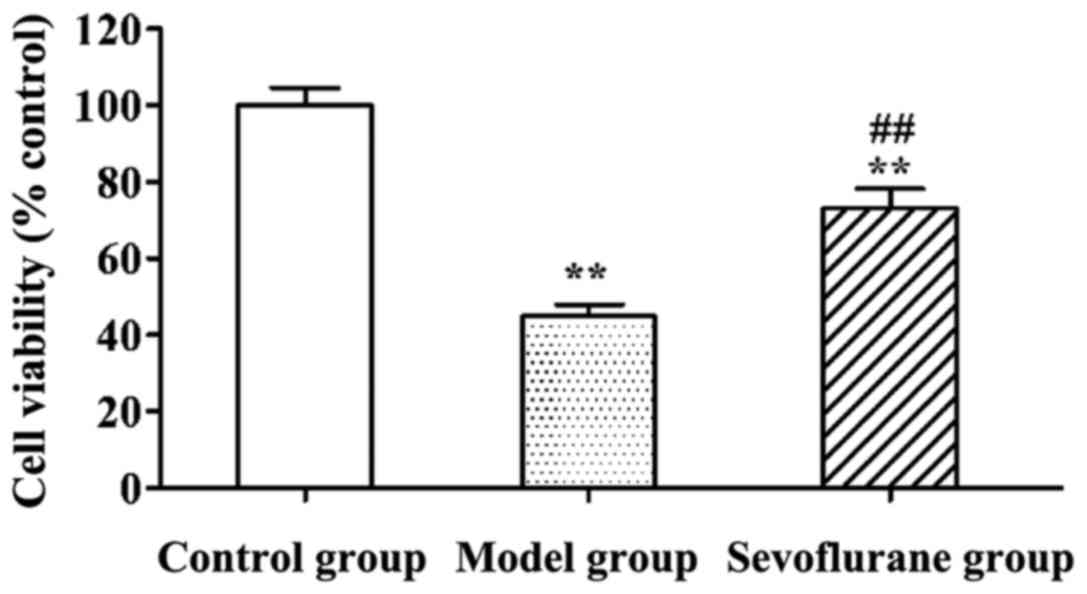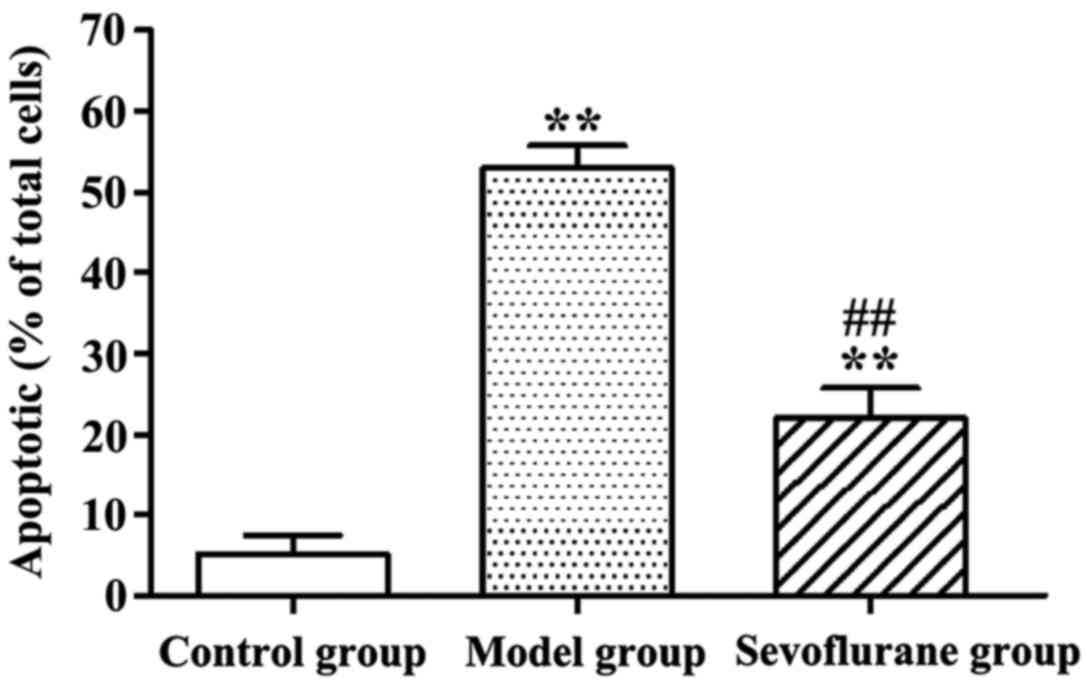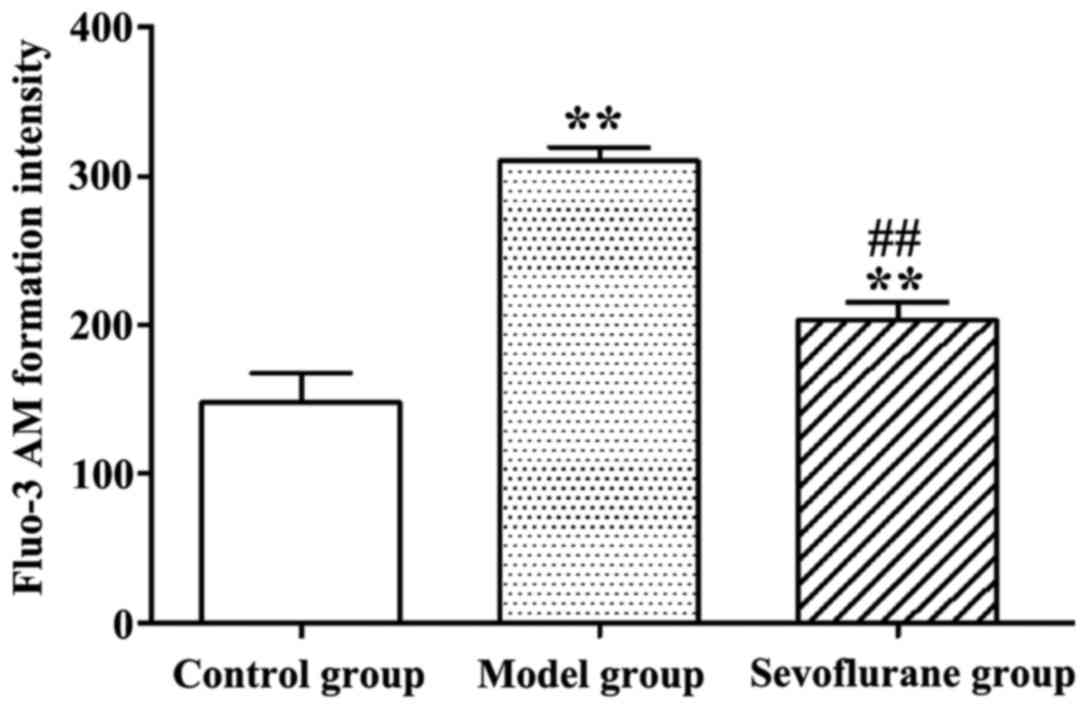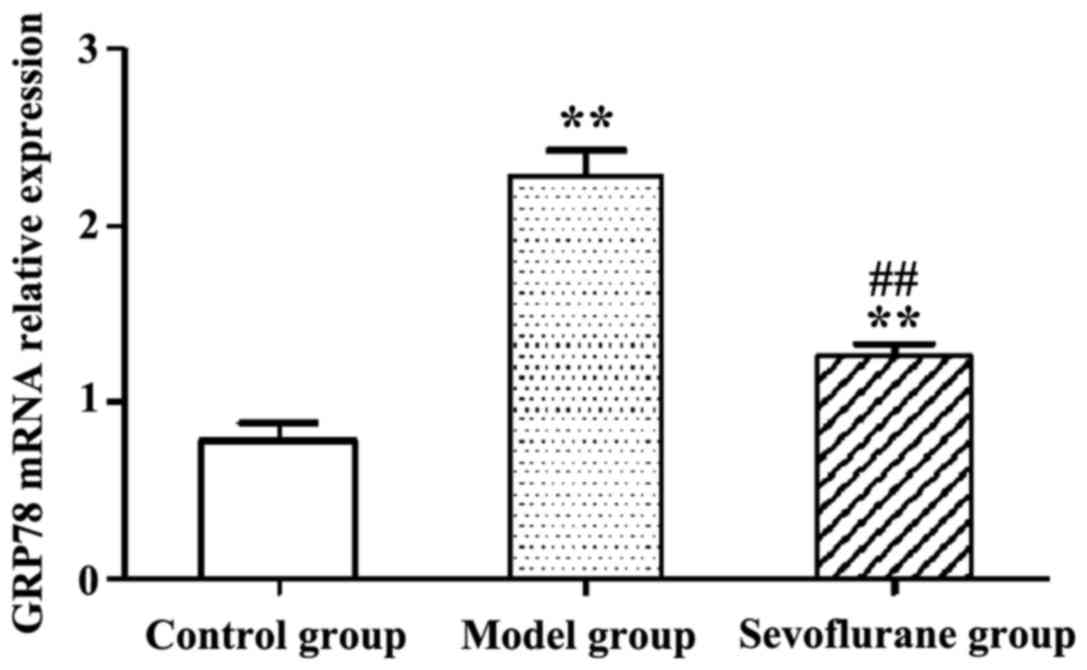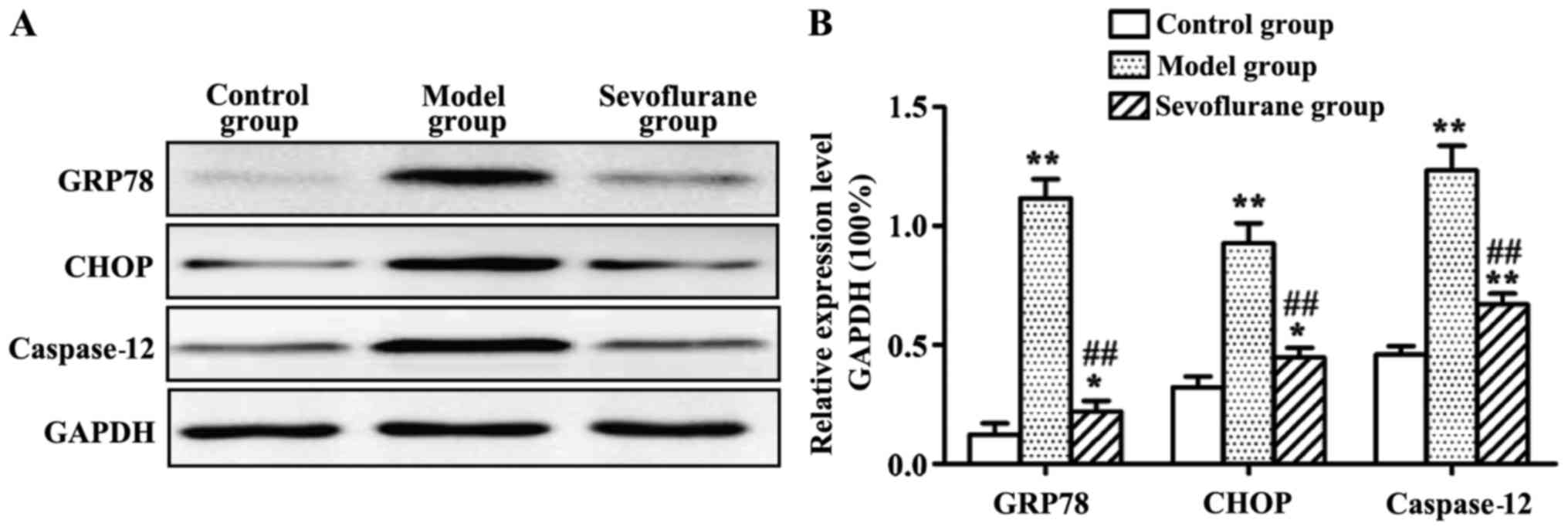|
1
|
Delbosc S, Paizanis E, Magous R, Araiz C,
Dimo T, Cristol JP, Cros G and Azay J: Involvement of oxidative
stress and NADPH oxidase activation in the development of
cardiovascular complications in a model of insulin resistance, the
fructose-fed rat. Atherosclerosis. 179:43–49. 2005. View Article : Google Scholar : PubMed/NCBI
|
|
2
|
Zhang GG, Teng X, Liu Y, Cai Y, Zhou YB,
Duan XH, Song JQ, Shi Y, Tang CS, Yin XH, et al: Inhibition of
endoplasm reticulum stress by ghrelin protects against
ischemia/reperfusion injury in rat heart. Peptides. 30:1109–1116.
2009. View Article : Google Scholar : PubMed/NCBI
|
|
3
|
Gustafsson AB and Gottlieb RA: Mechanisms
of apoptosis in the heart. J Clin Immunol. 23:447–459. 2003.
View Article : Google Scholar : PubMed/NCBI
|
|
4
|
Sharikabad MN, Østbye KM and Brørs O:
Effect of hydrogen peroxide on reoxygenation-induced
Ca2+ accumulation in rat cardiomyocytes. Free Radic Biol
Med. 37:531–538. 2004. View Article : Google Scholar : PubMed/NCBI
|
|
5
|
Benvenga S, Vicchio T, Di Bari F, Vita R,
Fallahi P, Ferrari SM, Catania S, Costa C and Antonelli A:
Favorable effects of myo-inositol, selenomethionine or their
combination on the hydrogen peroxide-induced oxidative stress of
peripheral mononuclear cells from patients with Hashimoto's
thyroiditis: Preliminary in vitro studies. Eur Rev Med Pharmacol
Sci. 21 Suppl 2:89–101. 2017.PubMed/NCBI
|
|
6
|
Schröder M: Endoplasmic reticulum stress
responses. Cell Mol Life Sci. 65:862–894. 2008. View Article : Google Scholar : PubMed/NCBI
|
|
7
|
Glembotski CC: Endoplasmic reticulum
stress in the heart. Circ Res. 101:975–984. 2007. View Article : Google Scholar : PubMed/NCBI
|
|
8
|
Bouwman RA, Salic K, Padding FG, Eringa
EC, van Beek-Harmsen BJ, Matsuda T, Baba A, Musters RJ, Paulus WJ,
de Lange JJ, et al: Cardioprotection via activation of protein
kinase C-delta depends on modulation of the reverse mode of the
Na+/Ca2+ exchanger. Circulation. 114(Suppl
1): I226–I232. 2006.PubMed/NCBI
|
|
9
|
Yildirim V, Doganci S, Aydin A, Bolcal C,
Demirkilic U and Cosar A: Cardioprotective effects of sevoflurane,
isoflurane, and propofol in coronary surgery patients: A randomized
controlled study. Heart Surg Forum. 12:E1–E9. 2009. View Article : Google Scholar : PubMed/NCBI
|
|
10
|
Inamura Y, Miyamae M, Sugioka S, Domae N
and Kotani J: Sevoflurane postconditioning prevents activation of
caspase 3 and 9 through antiapoptotic signaling after myocardial
ischemia-reperfusion. J Anesth. 24:215–224. 2010. View Article : Google Scholar : PubMed/NCBI
|
|
11
|
Allaouchiche B, Debon R, Goudable J,
Chassard D and Duflo F: Oxidative stress status during exposure to
propofol, sevoflurane and desflurane. Anesth Analg. 93:981–985.
2001. View Article : Google Scholar : PubMed/NCBI
|
|
12
|
Eguchi M, Liu Y, Shin EJ and Sweeney G:
Leptin protects H9c2 rat cardiomyocytes from
H2O2-induced apoptosis. FEBS J.
275:3136–3144. 2008. View Article : Google Scholar : PubMed/NCBI
|
|
13
|
Lee Y and Gustafsson AB: Role of apoptosis
in cardiovascular disease. Apoptosis. 14:536–548. 2009. View Article : Google Scholar : PubMed/NCBI
|
|
14
|
von Harsdorf R, Li PF and Dietz R:
Signaling pathways in reactive oxygen species-induced cardiomyocyte
apoptosis. Circulation. 99:2934–2941. 1999. View Article : Google Scholar : PubMed/NCBI
|
|
15
|
Ricci F, Masini F, Fossati B, Frascione P,
De Waure C, Capizzi R and Guerriero C: Combination therapy with
hydrogen peroxide (4%), salicylic acid (0.5%) and D-panthenol (4%):
Efficacy and skin tolerability in common acne vulgaris during sun
exposure period. Eur Rev Med Pharmacol Sci. 20:232–236.
2016.PubMed/NCBI
|
|
16
|
Then SM, Sanfeliu C, Top GM, Wan Ngah WZ
and Mazlan M: γ-Tocotrienol does not substantially protect DS
neurons from hydrogen peroxide-induced oxidative injury. Nutr Metab
(Lond). 9:12012. View Article : Google Scholar : PubMed/NCBI
|
|
17
|
Fu J, Huang H, Liu J, Pi R, Chen J and Liu
P: Tanshinone IIA protects cardiac myocytes against oxidative
stress-triggered damage and apoptosis. Eur J Pharmacol.
568:213–221. 2007. View Article : Google Scholar : PubMed/NCBI
|
|
18
|
Shu CW, Sun FC, Cho JH, Lin CC, Liu PF,
Chen PY, Chang MD, Fu HW and Lai YK: GRP78 and Raf-1 cooperatively
confer resistance to endoplasmic reticulum stress-induced
apoptosis. J Cell Physiol. 215:627–635. 2008. View Article : Google Scholar : PubMed/NCBI
|
|
19
|
Yang YM, Yang Y, Dai WW, Li XM, Ma JQ and
Tang LP: Genistein-induced apoptosis is mediated by endoplasmic
reticulum stress in cervical cancer cells. Eur Rev Med Pharmacol
Sci. 20:3292–3296. 2016.PubMed/NCBI
|
|
20
|
Oyadomari S and Mori M: Roles of
CHOP/GADD153 in endoplasmic reticulum stress. Cell Death Differ.
11:381–389. 2004. View Article : Google Scholar : PubMed/NCBI
|
|
21
|
Okada K, Minamino T and Kitakaze M: Role
of endoplasmic reticulum stress in hypertrophic and failing hearts.
Nihon Yakurigaku Zasshi. 126:385–389. 2005.(In Japanese).
View Article : Google Scholar : PubMed/NCBI
|
|
22
|
Szegezdi E, Logue SE, Gorman AM and Samali
A: Mediators of endoplasmic reticulum stress-induced apoptosis.
EMBO Rep. 7:880–885. 2006. View Article : Google Scholar : PubMed/NCBI
|
|
23
|
Nakagawa T, Zhu H, Morishima N, Li E, Xu
J, Yankner BA and Yuan J: Caspase-12 mediates
endoplasmic-reticulum-specific apoptosis and cytotoxicity by
amyloid-beta. Nature. 403:98–103. 2000. View Article : Google Scholar : PubMed/NCBI
|
|
24
|
Lai E, Teodoro T and Volchuk A:
Endoplasmic reticulum stress: Signaling the unfolded protein
response. Physiology (Bethesda). 22:193–201. 2007.PubMed/NCBI
|
|
25
|
Yang Y, Zhang Y, Liu X, Zuo J, Wang K, Liu
W and Ge J: Exogenous taurine attenuates mitochondrial oxidative
stress and endoplasmic reticulum stress in rat cardiomyocytes. Acta
Biochim Biophys Sin (Shanghai). 45:359–367. 2013. View Article : Google Scholar : PubMed/NCBI
|



